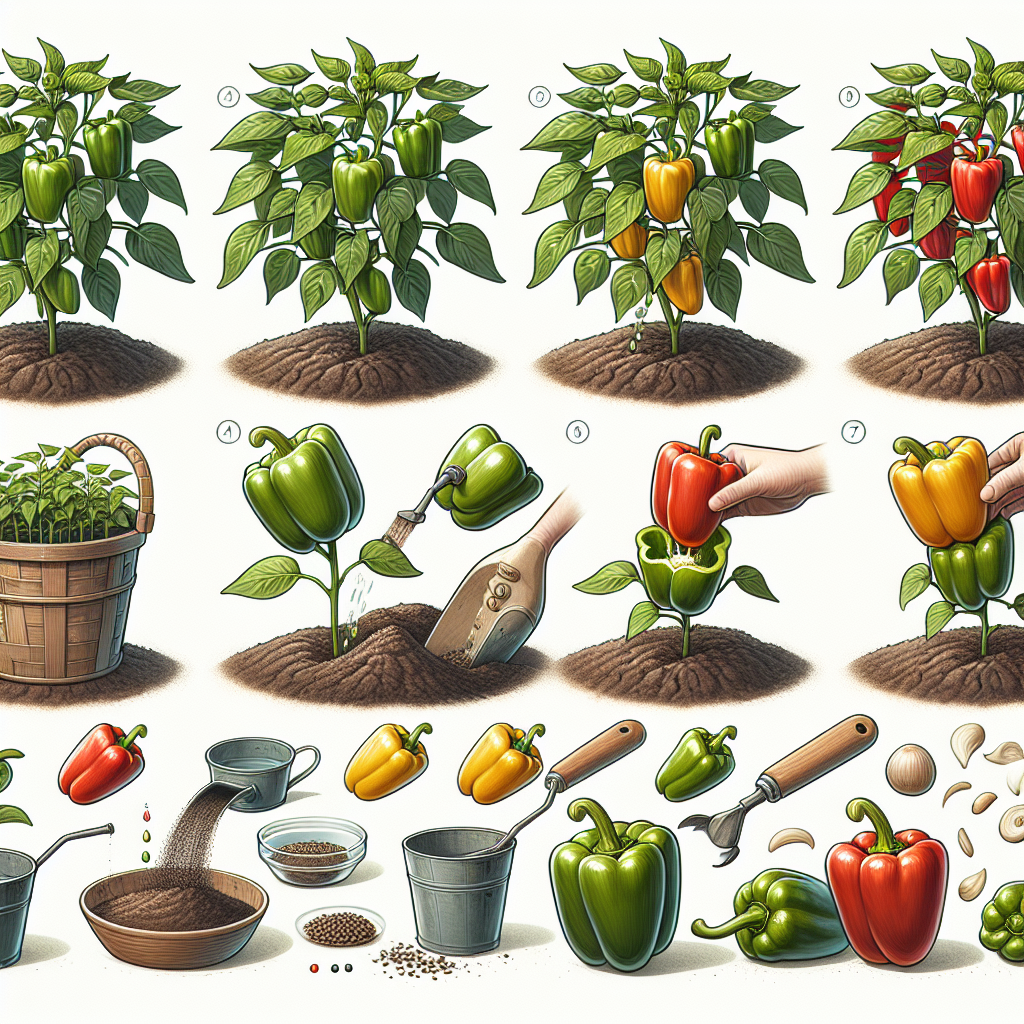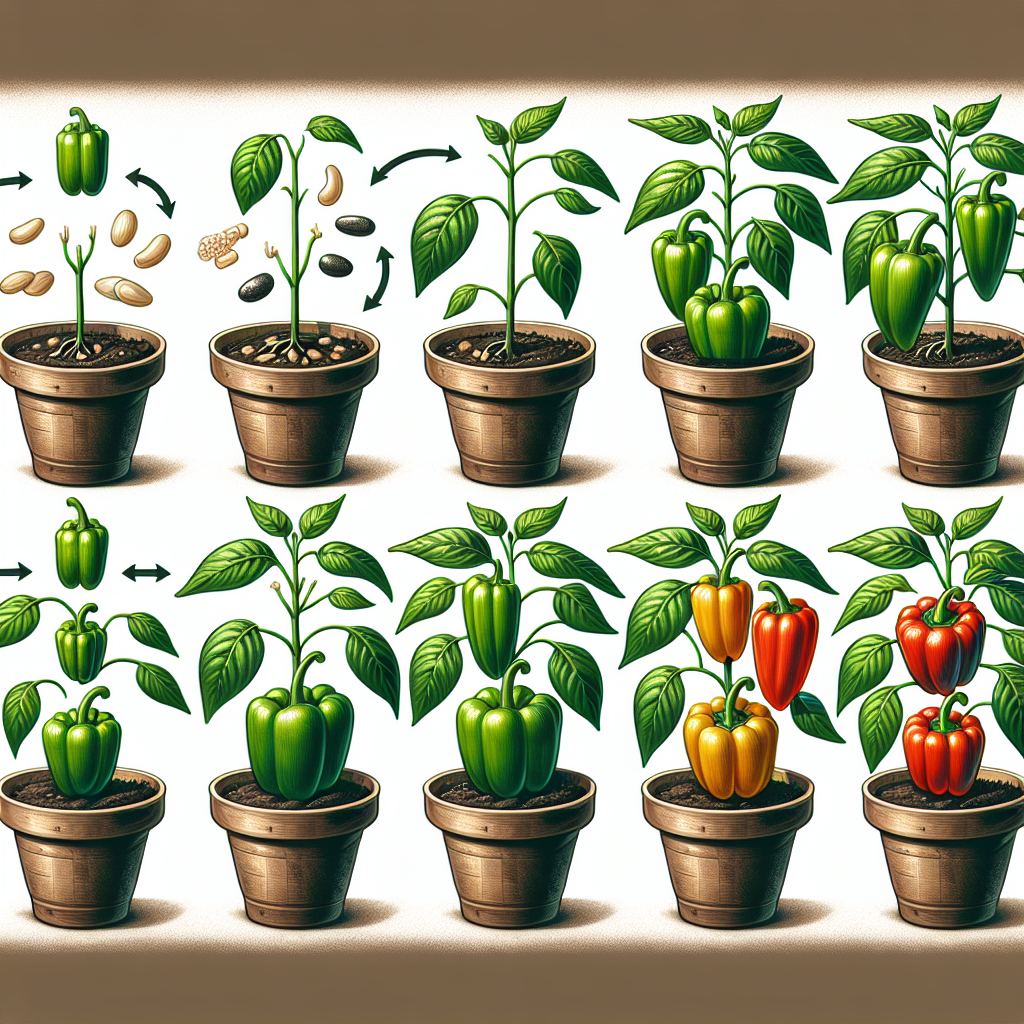A Guide to Successfully Growing Bell Peppers at Home
Bell peppers are not only a delicious addition to any meal, but they also make for a beautiful addition to your home garden. Growing bell peppers at home allows you to have control over the growing process, ensuring that you get the freshest and most flavorful peppers possible. Whether you are an experienced gardener or just starting out, this guide will provide you with all the information you need to successfully grow bell peppers at home.
1. Choosing the Right Variety
When it comes to growing bell peppers, there are several varieties to choose from. The most common ones include green, red, yellow, and orange peppers. Each variety has its own unique flavor profile and nutritional benefits. Before planting, consider what you want out of your peppers and choose a variety accordingly.
2. Preparing the Soil
Bell peppers thrive in well-draining soil that is rich in organic matter and nutrients. Start by clearing the area where you plan on planting your peppers. Remove any rocks or debris and loosen the soil with a garden fork or tiller. Incorporate compost or aged manure into the soil to enrich it with essential nutrients.
3. Planting Methods
There are two main methods for planting bell peppers: starting from seeds indoors or purchasing seedlings from a nursery.
If starting from seeds indoors, begin approximately 8-10 weeks before the last expected frost date in your region. Fill seed trays with seed-starting mix and plant 2-3 seeds per cell about ¼ inch deep. Place the trays in a warm location (around 70°F) with plenty of light until germination occurs.
If purchasing seedlings from a nursery, ensure they are healthy and vigorous before transplanting them into your garden.
4. Proper Spacing
When planting bell pepper seedlings outdoors, ensure that you give them enough space to grow properly. Space each plant about 18-24 inches apart in rows that are approximately 24-36 inches apart. Providing adequate space ensures good airflow and reduces the risk of disease.

5. Watering and Fertilizing
Bell peppers require consistent watering to thrive, especially during dry spells. Water deeply, ensuring that the soil is evenly moist but not waterlogged. Mulching around the plants can help retain moisture and reduce weed growth.
Fertilize your pepper plants every 3-4 weeks with a balanced organic fertilizer to promote healthy growth. Avoid over-fertilizing as this can lead to excessive leaf growth at the expense of fruit production.
6. Sunlight Requirements
Bell peppers require full sun exposure (at least 6-8 hours of direct sunlight daily) to produce a bountiful harvest. Choose a location in your garden that receives ample sunlight throughout the day to ensure optimal plant growth.
7. Supporting the Plants
As bell pepper plants grow, they might require support to prevent branches from breaking under the weight of heavy fruit. Stake or cage each plant to provide support as it grows taller and starts producing peppers.
8. Pest Management
Like any plant, bell peppers are susceptible to pest infestations. Common pests include aphids, slugs, and caterpillars. Regularly inspect your plants for any signs of pests and promptly take action if you notice an issue. Consider using organic pest control methods such as insecticidal soap or neem oil if necessary.
9. Harvesting Tips
Knowing when to harvest your bell peppers is crucial in maximizing their flavor and quality. Most bell pepper varieties are ready to be harvested when they reach their mature color (green, red, yellow, or orange) and have a firm texture. Use a sharp knife or pair of scissors to cut the fruit from the plant rather than pulling it off, reducing damage to both the pepper and plant.
10. Storing Your Harvest
If you have more bell peppers than you can consume immediately, proper storage is essential. Bell peppers can be stored in the refrigerator for up to 1-2 weeks. Alternatively, they can be sliced, blanched, and frozen for later use in various dishes.
In conclusion, growing bell peppers at home can be a rewarding and enjoyable experience. By following these guidelines on choosing the right variety, preparing the soil, planting methods, spacing, watering and fertilizing, sunlight requirements, supporting the plants, pest management, harvesting tips, and storing your harvest properly, you will be well on your way to successfully growing delicious bell peppers right in your own backyard. Happy gardening!














